Differentiate between the following :
(a) (I) Propanoic acid (C2H5COOH) and (II) acrylic acid (CH2=CH−COOH).
(b) (I)2−Bromo propanoic acid (CH3CHBeCOOH) and (II) pyruvic acid (MeCOCOOH)
( c) (I)2−Chloro-propanoic acid and (II) propanoic acid
(d) (I) Formic acid (HCOOH) and (II) acetic acid (MeCOOH).
(e) (I) Malonic acid 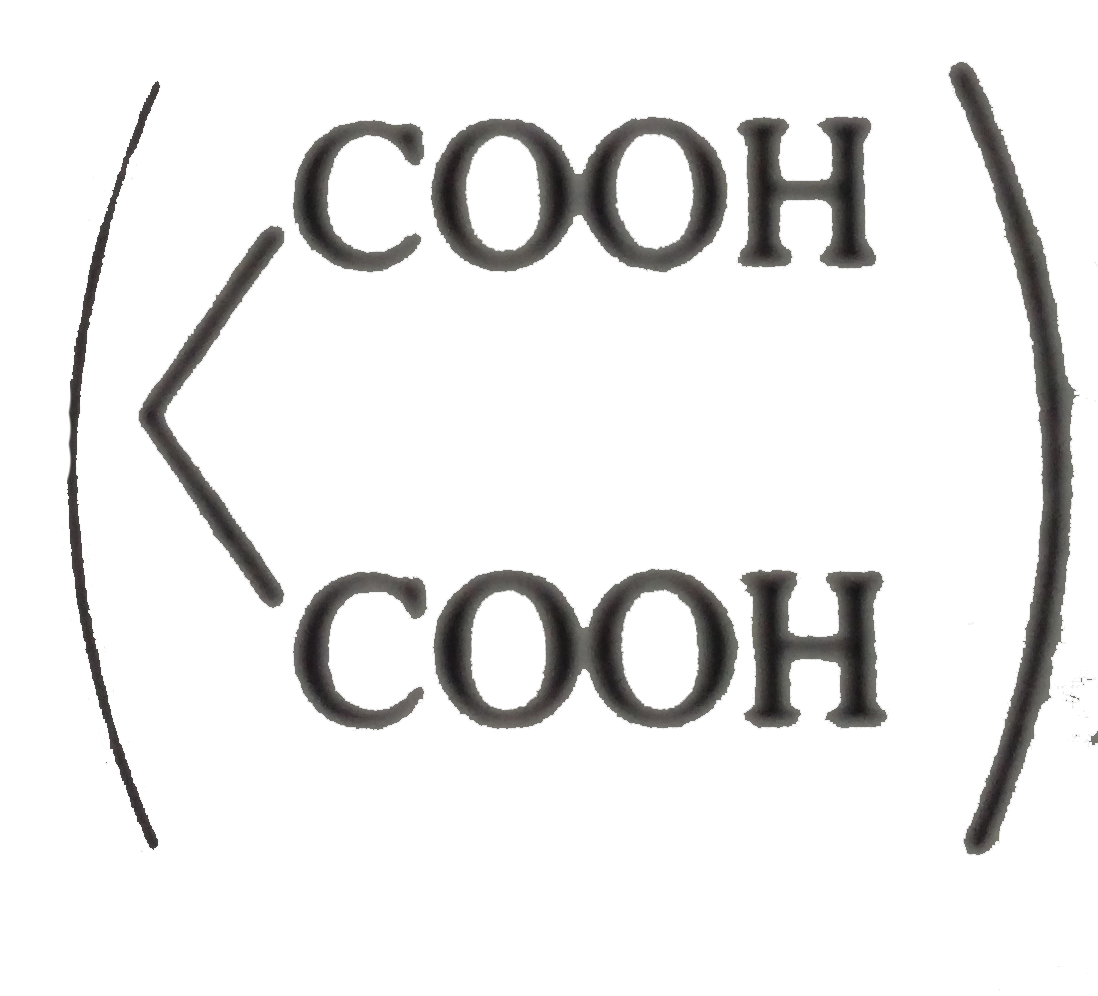 and (II) oxalic acid ((COOH)2).
and (II) oxalic acid ((COOH)2).
(f) (I) Malonic acid 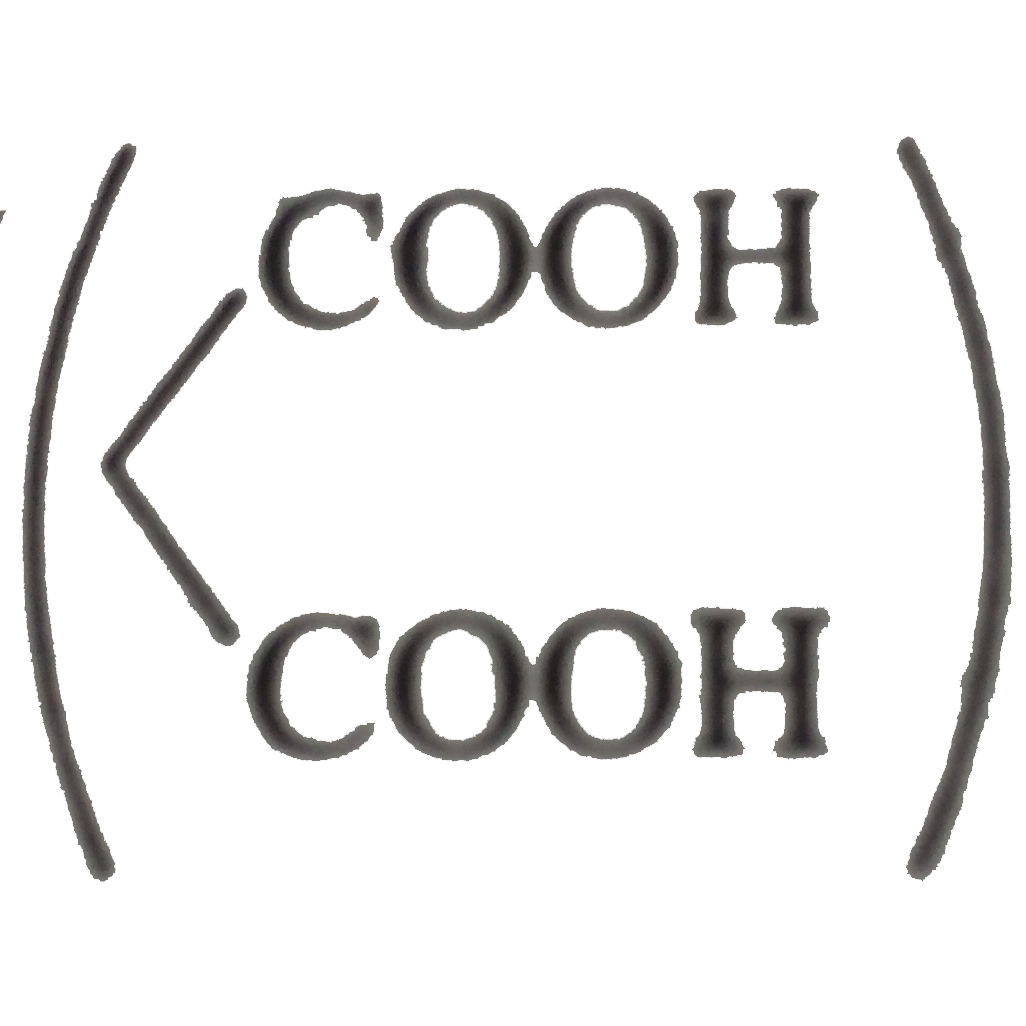 and (II) succinic acid
and (II) succinic acid 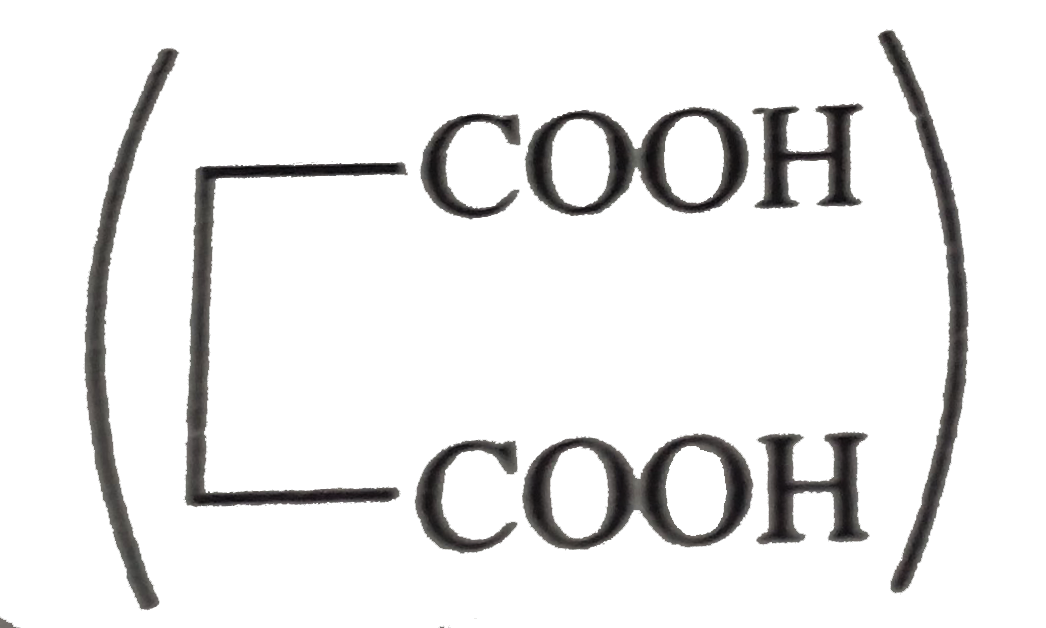
(g) (I)n-Butanolm (II) butanal, (III) dimethyl ether, (IV) butanoic acid, (V) butane.
Video Solution
Text Solution
(a) (II) is also an alkene so it decolourises Br2/CCl4 solution, but (I) does not.
(b) (II) has a keto group , so it gives 2,4−DNP test forming a red insoluble precipitate of 2,4−dinitro phenyl hydrazone, but (I) does not.
( c) Both give precipitate with aqueous AgNO3.
(II) CH3CH2COOH+Ag⊕→CH3CH2COOӨAg⊕Soluble inHNO3.
(I) 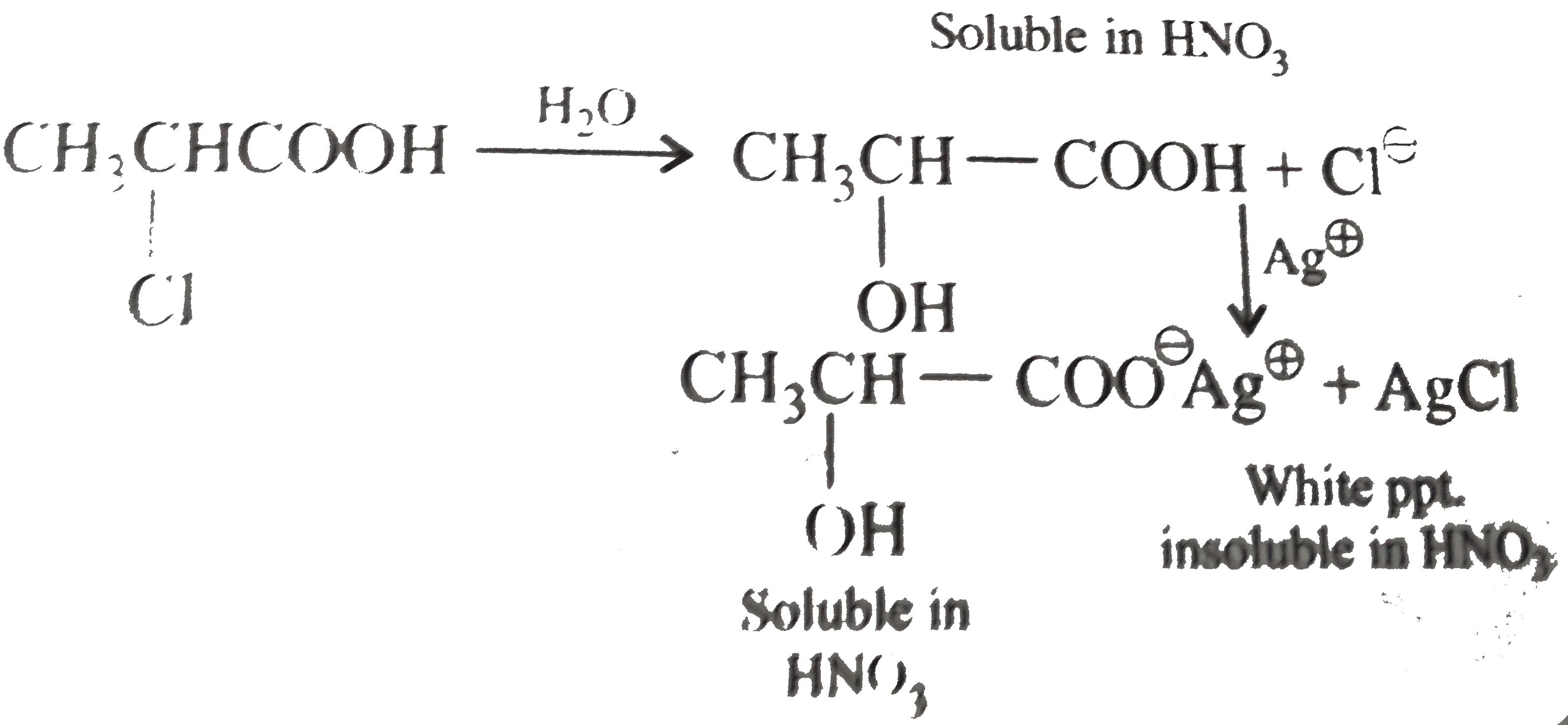
But the precipitate with (II) dissolves on acidification with HNO3, regenerating an acid.
But the white precipitate from (I) contains AgCl. which does not dissolve in aq. HNO3.
(d) Due to the presence of aldehydic-type H,(I) is oxidised by acidic KMnO4 whose purple solution is decolourised. Moreover, (I) also gives positive Tollens and Fehling's solution test, but (II) does not give these tests.
( e) (II) does not give these tests.
( e) (II) on heating decomposes to CO+H2O
(COOH)2Δ−−→CO2+H2O(I) on heating gives CO2.

(f) (II) on heating forms anhydride, but (I) does not.
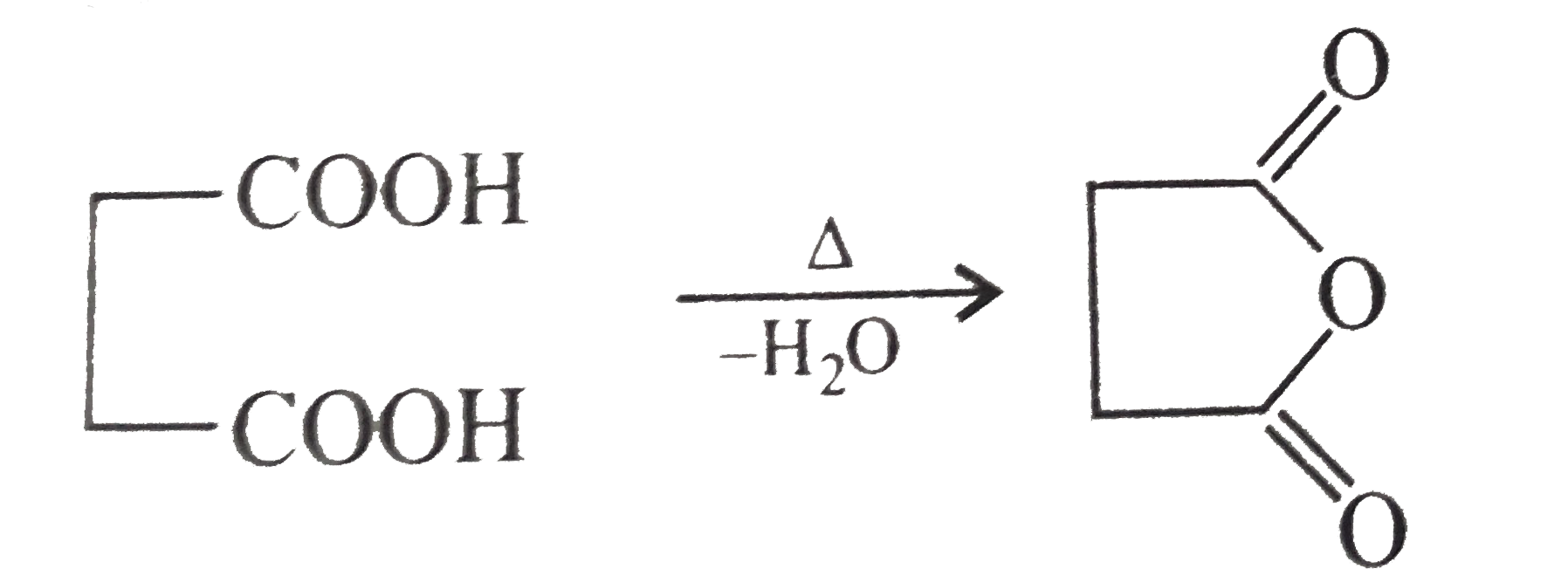
(g) Add NaHVO3 , (IV) would evolve CO2. Then add Tollens reagent, [Ag(NH3)2]⊕,(II) would give Ag mirror.
Then add Na metal to the three remaining compounds, (I) would react with the evolution of H2 gas. Add conc.H2SO4 to the remaining two compounds, (III) would dissolve to give a warm solution. (V) is inert to all the above tests.
|
Topper's Solved these Questions
- CARBOXYLIC ACIDS AND THEIR DERIVATIVESBOOK - CENGAGE CHEMISTRYCHAPTER - CARBOXYLIC ACIDS AND THEIR DERIVATIVESEXERCISE - Exercises (Subjective)
19 Videos
- CARBOXYLIC ACIDS AND THEIR DERIVATIVESBOOK - CENGAGE CHEMISTRYCHAPTER - CARBOXYLIC ACIDS AND THEIR DERIVATIVESEXERCISE - Exercises (Linked Comprehension)
34 Videos
- CARBOXYLIC ACIDS AND THEIR DERIVATIVESBOOK - CENGAGE CHEMISTRYCHAPTER - CARBOXYLIC ACIDS AND THEIR DERIVATIVESEXERCISE - Exercises Archives (Analytical And Descriptive)
34 Videos
- BIOMOLECULES, POLYMERS AND CHEMISTRY IN EVERYDAY LIFEBOOK - CENGAGE CHEMISTRYCHAPTER - BIOMOLECULES, POLYMERS AND CHEMISTRY IN EVERYDAY LIFEEXERCISE - QUESTION BANK
8 Videos
- CHEMICAL KINETICSBOOK - CENGAGE CHEMISTRYCHAPTER - CHEMICAL KINETICSEXERCISE - Archives Subjective
23 Videos
Similar Questions
Knowledge Check
Arrange increasing order of acidic strength of following dibasic acids:
(I) oxalic acid. (II) succinic acid (III) malonic acid (IV) adipic acidAIII<II<I<IVBII<III>I>IVCI>III>II>IVDII>I>III<IVThe correct order of acidic strength of the following is
(I) Oxalic acid HOOC−COOH
(II) Malonic acid
HOOC−CH2−COOH
(III) Succinic acid
HOOC−(CH2)2−COOH
(IV) Glutaric acid
HOOC−(CH2)3−COOHAI>II>III>IVBI>III>II>IVCIV>III>II>IDIV>II>III>IThe acids, HCOOH and CH3COOH are distinguished by
Areaction with Na metalBreaction with NaOHCreaction with Tollen's reagentDreaction with Schiff's reagent
Convert:
(i) Ethanoic acid to propanoic acid.
(ii) Ethanol to propanone.
View SolutionMe3CCH2COOHis more acidic than Me3SiCH2COOH.
View SolutionIdentify compounds (A) and (B)
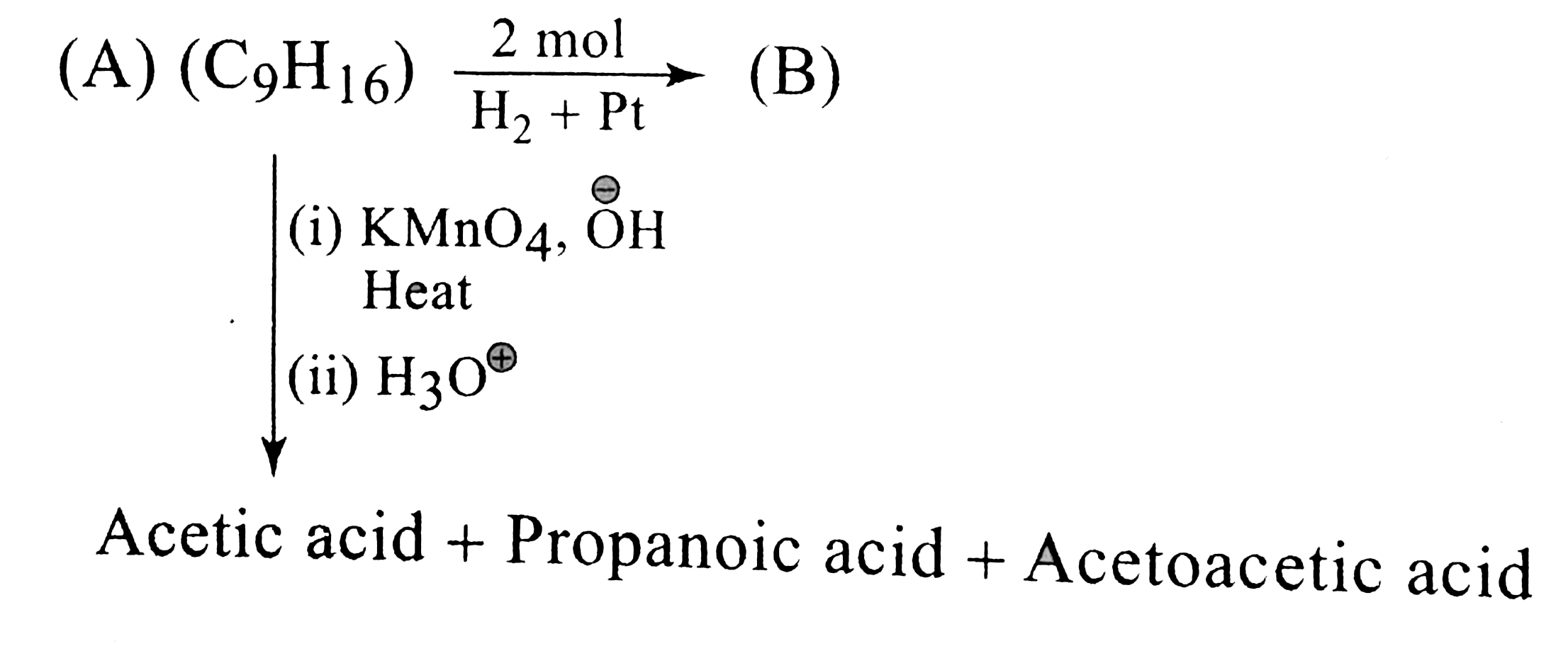
Acetic acid + Propanoic acid + Acetoacetic acid
View SolutionWrite conjugate acid for the following :
(i) C2H5NH2 (ii) CH3COOH
View SolutionArrange the following carboxylic acid in their decreasing acidity
(1) COOH|COOH Oxalic acid
(2) HOOC−CH2−COOH Molonic acid
(3) CH2−COOH|CH2−COOH Succinic acid
View Solution
